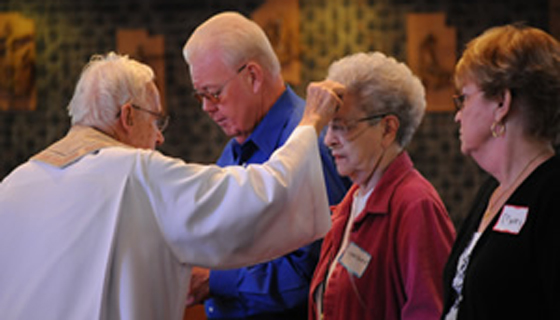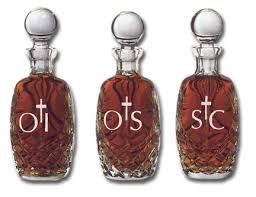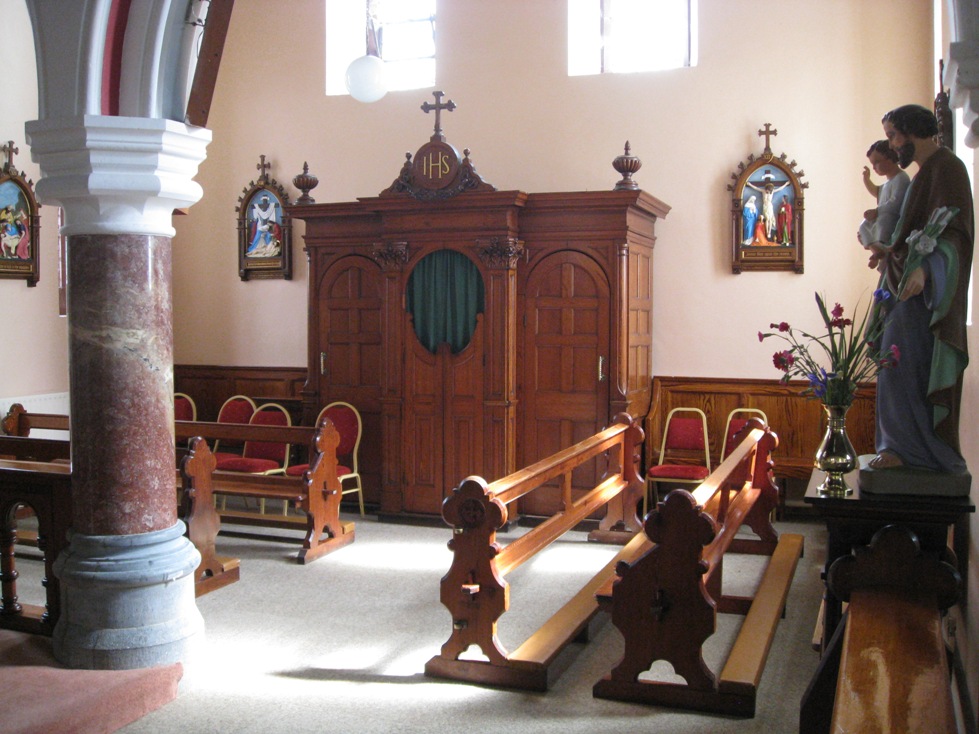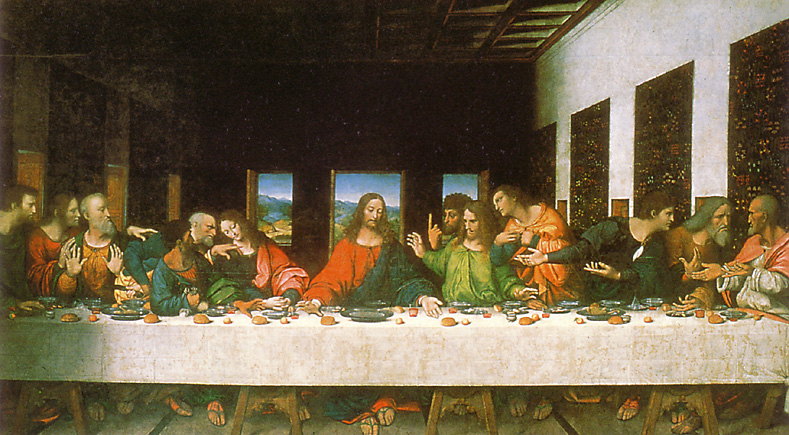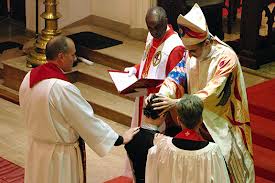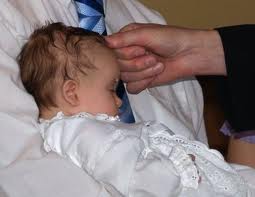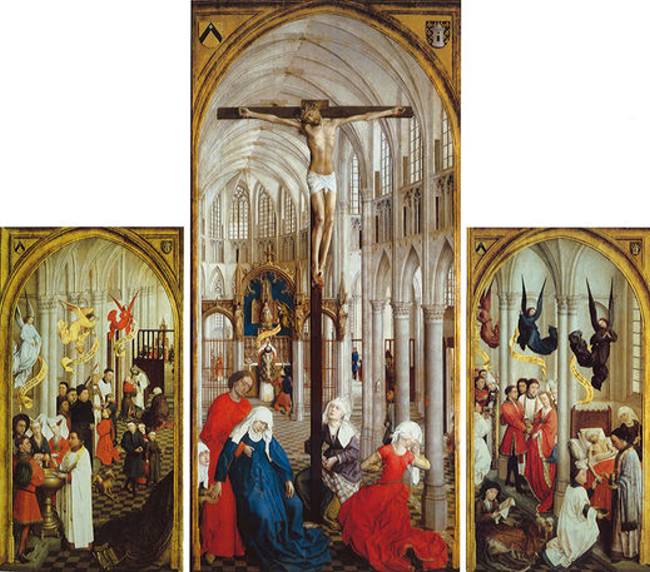The Sacraments – Matrimony
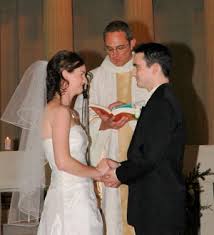 Matrimony, or marriage, is a covenant between a man and a woman by which they establish between themselves a partnership for the whole of life. For a valid marriage, a man and a woman must express their conscious and free consent to a definitive self-giving to each other. It is ordinarily celebrated in a nuptial Mass. For much of the Church’s history, no specific ritual was prescribed for celebrating a marriage: Marriage vows did not have to be exchanged in a church, nor was a priest’s presence required. A couple could exchange consent anywhere, anytime.
Matrimony, or marriage, is a covenant between a man and a woman by which they establish between themselves a partnership for the whole of life. For a valid marriage, a man and a woman must express their conscious and free consent to a definitive self-giving to each other. It is ordinarily celebrated in a nuptial Mass. For much of the Church’s history, no specific ritual was prescribed for celebrating a marriage: Marriage vows did not have to be exchanged in a church, nor was a priest’s presence required. A couple could exchange consent anywhere, anytime.
Matrimony was raised by Christ to the dignity of a sacrament when he discussed the issue of divorce with some Pharisees. Jesus said to them,
“Have you not read that he who created them from the beginning made them male and female, and said, ‘Therefore a man shall leave his father and his mother and hold fast to his wife, and they shall become one flesh’? So they are no longer two but one flesh. What therefore God has joined together, let not man separate.”
[ Genesis 2:24, Matthew 19:4-6 ]
The Catholic Church also has requirements before Catholics can be considered validly married in the eyes of the Church. A valid Catholic marriage results from four elements: (1) the spouses are free to marry; (2) they freely exchange their consent; (3) in consenting to marry, they have the intention to marry for life, to be faithful to one another and be open to children; and (4) their consent is given in the canonical form, i.e., in the presence of two witnesses and before a properly authorised church minister. Exceptions to the last requirement must be approved by church authority.
The Church has always recognised the states of virginity and celibacy as superior to the married state. This appears to have stemmed from Saint Paul who recommended celibacy but recognised that not all have the ability to live such a life: “Now as a concession, not a command, I say this: I wish that all were as I myself am. But each has his own gift from God, one of one kind and one of another. To the unmarried and the widows I say that it is good for them to remain single as I am. But if they cannot exercise self-control, they should marry. For it is better to marry than to burn with passion.” [ 1 Corinthians 7:6–9 ]
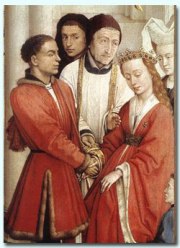 On the right is another detail from the Seven Sacraments painting. Can you find the detail in the full picture?
On the right is another detail from the Seven Sacraments painting. Can you find the detail in the full picture?
Below is a romanticised depiction of the marriage in 1170 between Aoife MacMurrough and Strongbow in the ruins of Waterford, painted in 1854 by Daniel Maclise. Nowadays, marriages are usually quieter affairs, with fewer dead bodies. Click the picture to see a bigger copy.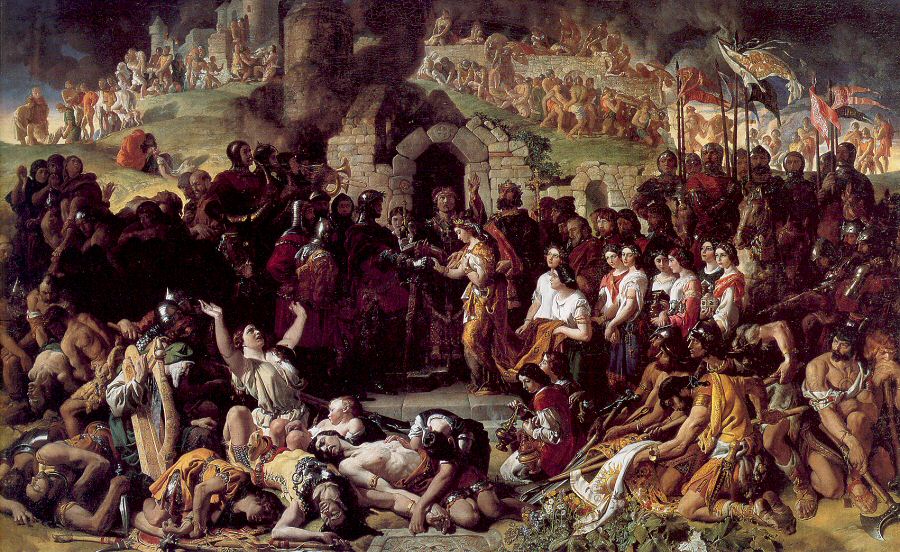



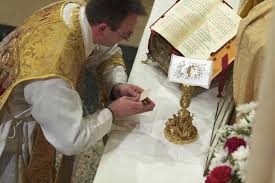 Priests depend on their bishops in the exercise of their pastoral functions – they are called to be the bishops’ prudent co-workers. They receive from the bishop the charge of a parish community or some other office within the diocese.
Priests depend on their bishops in the exercise of their pastoral functions – they are called to be the bishops’ prudent co-workers. They receive from the bishop the charge of a parish community or some other office within the diocese.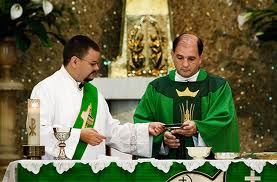 The transitional diaconate is a temporary stage which a man passes through on his way to be ordained to the priesthood. Normally, a transitional deacon is ordained as a priest after six months.
The transitional diaconate is a temporary stage which a man passes through on his way to be ordained to the priesthood. Normally, a transitional deacon is ordained as a priest after six months.